Stinging Insects
Home > Pest Library > Stinging Insects

What are stinging insects?
There are many types of stinging insects found living across the country. Bees, yellow jackets, wasps, and hornets are common examples of stinging insects that people come into contact with. Stinging insects are aggressive pests but also beneficial to the environment. Many species of bees are responsible for pollinating a variety of plants and crops. Predatory species like yellow jackets and wasps hunt down and feed on many different species of nuisance insects, helping to keep their populations down.
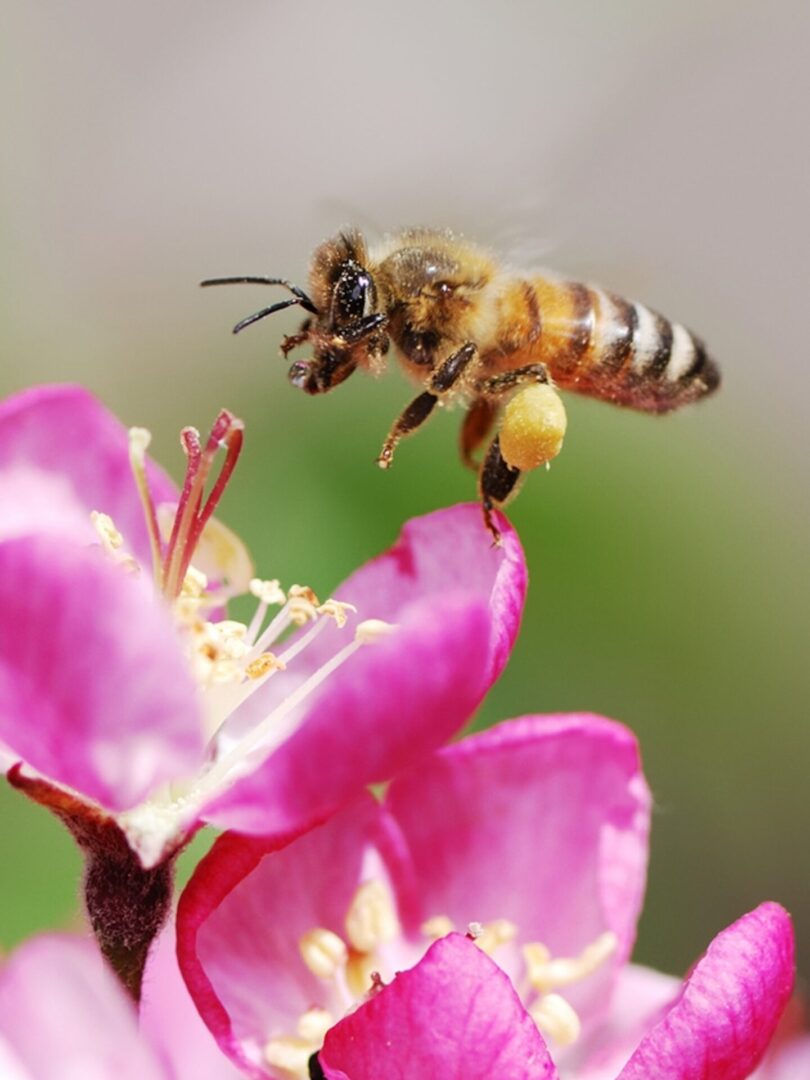
Honeybees are reddish brown in color, with black and yellow striped patterns on the abdomen. They range in size from 15mm to 20 mm long. Like most bee species, honeybees normally cannot withstand extremely cold temperatures. The social insects live in a structured caste system with a dominant queen, female workers, and male drones. Nesting in hives made up of wax cells, the insects are important pollinators and producers of honey. Though not overly aggressive, the honeybee will sting to defend the hive. Possible signs of infestation include the sighting of a swarm of bees, the audible sound of bees buzzing, and experiencing multiple stings. Honeybees may nest in wall voids, allowing for a gradual build-up of audible buzzing sounds. If the nest remains out of sight, witnessing bees coming and going to the same area over time may signal the presence of a large infestation.
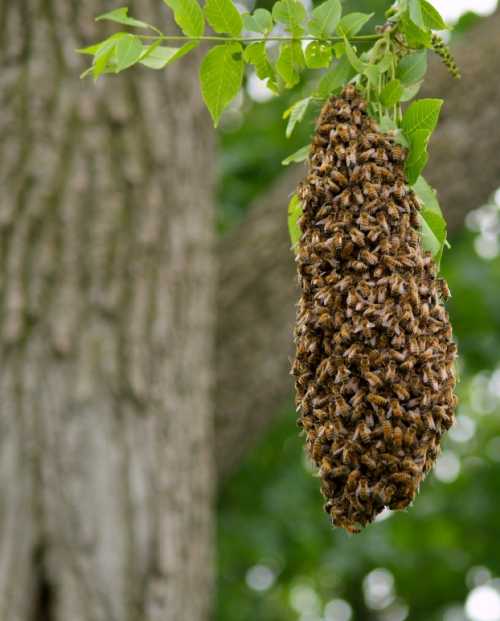

Yellow jackets are black and yellow in color. Each species has a unique pattern on the abdomen that allows for easy classification. Regardless of species, the yellow jacket body is divided into three distinct body parts: the head, thorax, and abdomen. The stinging insect also boasts two pairs of wings, with the forewings being larger than the hind ones. They have relatively short antennae. Queens are slightly larger than their workers and drones, but all yellow jackets range from 12 to 18 mm in size. Nest size, shape, and location depend on the species. The aerial yellow jacket prefers to construct nests hanging from shrubs, trees, or building eaves, while the common yellow jacket most often lives completely or partially below ground. German yellow jackets target wall voids and attics.
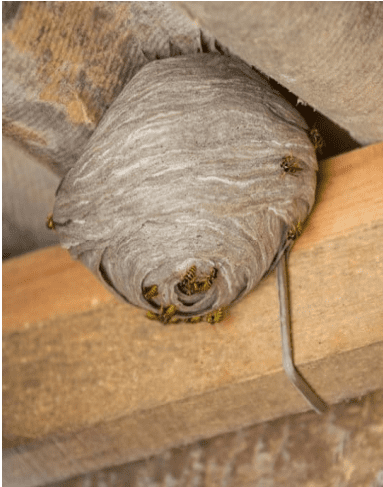
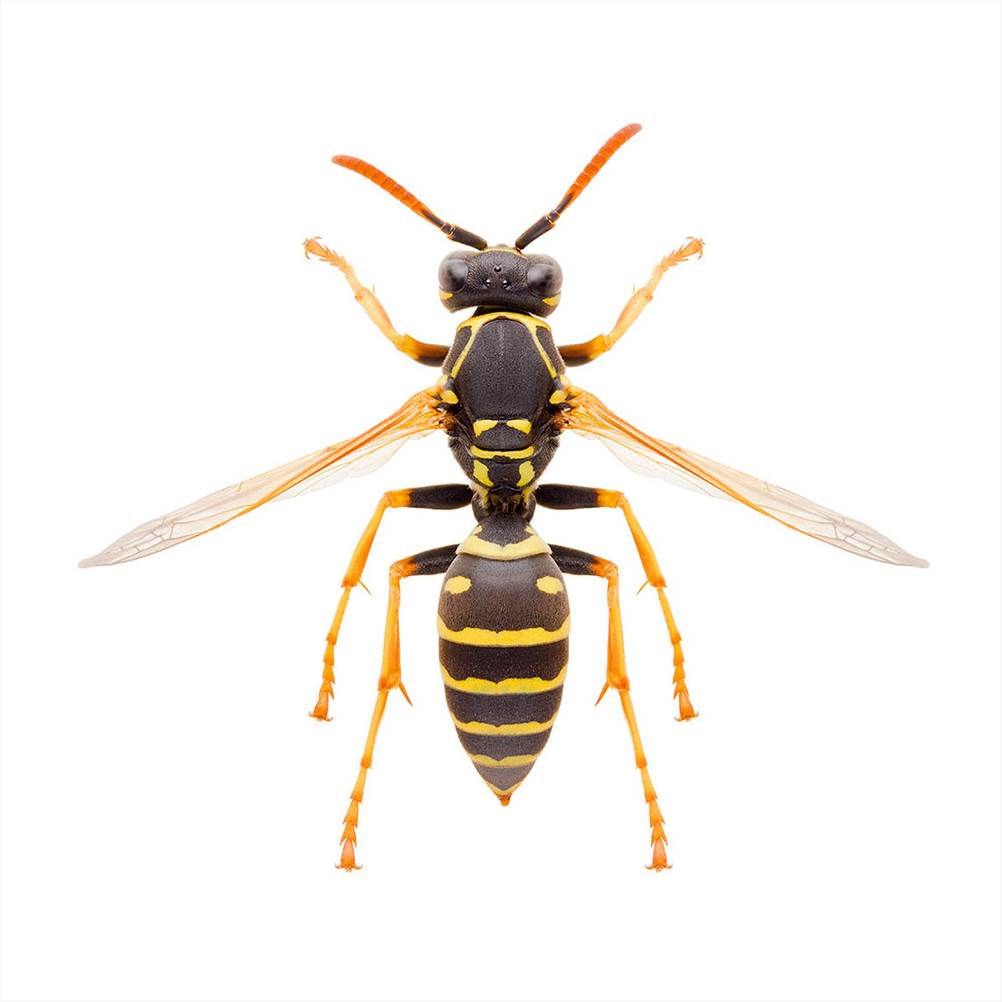
Paper wasps are large wasps that have pinched waist and six long, thin legs that dangle below their bodies when in flight. They have yellow and black stripes and orange antennae. They average 10mm to 25mm long. Additionally, paper wasps are commonly identified by their honeycomb umbrella-shaped nests. Paper wasps are semi-social and live in colonies made up of queens, workers, and males. Queens wait out cold weather hidden in building cracks or tree bark before choosing a place the following spring to build their nests. Eggs are laid in individual cells, pupate, and eventually become workers. Rather than reproducing, workers help build the nest and aid in feeding and protecting young. They will live anywhere they can build nests. These nests hang upside down and require shelter, so common locations include branches, eaves, and windowsills.
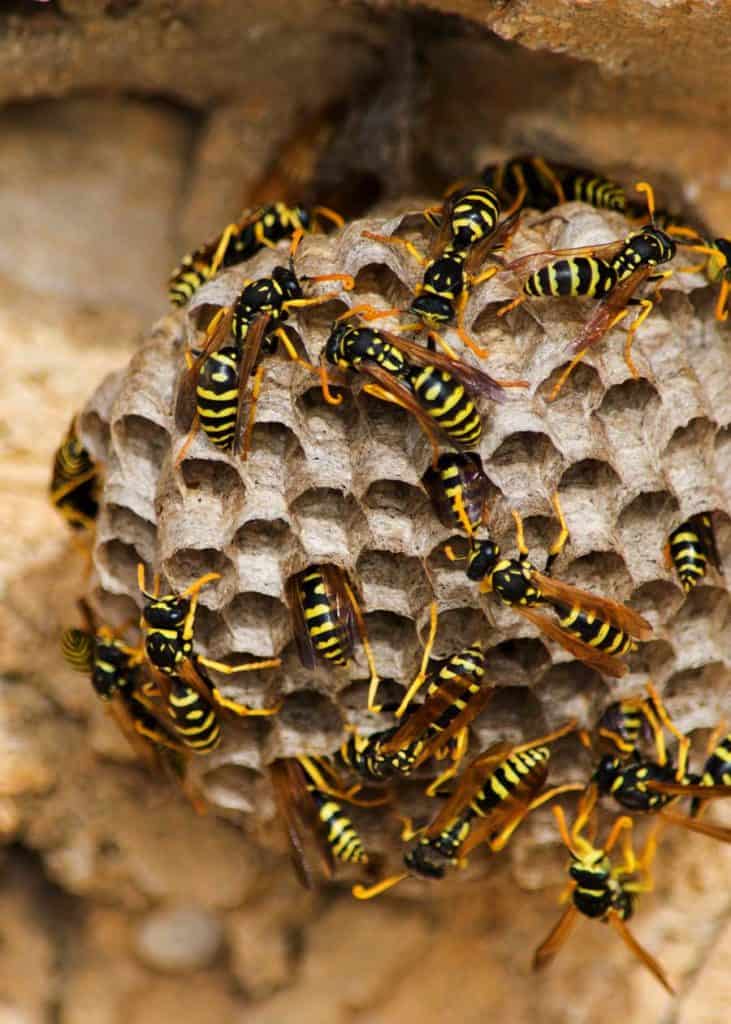

Bald-faced hornets are black in color with a white pattern covering most of their face. They have long, wasp-like bodies ranging in size from 13mm to 20mm in length. Bald-faced hornet nests are grey and papery, approximately 60 cm tall, 45 cm across, and shaped like a football. Spotting such an object hanging from trees, bushes, or the eaves of buildings indicates a bald-faced hornet infestation. Common nesting sites include bushes and shrubberies, trees, and the eaves of buildings. As foraging insects, bald-faced hornets frequently disturb picnics and trash bins for sugary beverages and chunks of prepared meat. The average nest size fluctuates between 200 and 400 workers but can swell to as many as 700 to 1,000 individuals. Stings generally only cause some pain, swelling, and redness; however, people who suffer from an allergic reaction may be at risk of experiencing anaphylactic shock if stung.

Are stinging insects dangerous?
While not all species of stinging insects are aggressive, they are all considered dangerous. Their venom is strong enough to trigger allergic reactions in people, sometimes even causing life-threatening anaphylaxis to occur. Stinging insects sting to defend themselves or their colonies. Their stings can be painful and may leave behind large, red welts. You should always contact a professional to remove a stinging insect nest from your property to make sure you avoid their dangerous stings.
Why do I have a stinging insect problem?
Stinging insects, depending on their exact species, feed on a variety of foods, including insects, proteins, nectar, sweets, and honeydew. They are attracted to properties that offer ample food sources and safe places to create their nests. Properties that have open garbage cans, compost piles, gardens, flowering vegetation, outdoor eating areas, clogged gutters, fallen trees, birdbaths, or ponds attract stinging insects. Stinging insects are most problematic in the late summer and early fall months when their colonies are at peak numbers. This is also when they are out and about trying to gather enough food to feed their large colonies.
Where will I find stinging insects?
Stinging insects build their nests in a variety of locations, as long as they are provided with protection and shelter. Stinging insects create their nests in rock crevices, on rock overhangs, on trees or utility poles, and under porches, decks, and roof eaves. German yellow jackets, for example, prefer to nest in voids. Stinging insects can find their way indoors to nest inside attics, crawl spaces, walls voids, and outbuildings like barns, sheds, and garages.
Where will I find stinging insects?
Stinging insects build their nests in a variety of locations, as long as they are provided with protection and shelter. Stinging insects create their nests in rock crevices, on rock overhangs, on trees or utility poles, and under porches, decks, and roof eaves. German yellow jackets, for example, prefer to nest in voids. Stinging insects can find their way indoors to nest inside attics, crawl spaces, walls voids, and outbuildings like barns, sheds, and garages.
How do I get rid of stinging insects?
The best and safest solution to a stinging insect infestation is a professional solution. The residential and commercial pest experts at Affordable Pest Control are dedicated to using the latest scientific techniques and up-to-date products, practices, and procedures to get rid of stinging insects and other household-invading pests. To learn more about ridding stinging insects from your Colorado area home or property, or to schedule a free inspection, call Affordable Pest Control today!
How can I prevent stinging insects in the future?
Keeping stinging insects off your Colorado property and out of your home can be difficult. There are a few things you can do to help to deter them:
- Caulk cracks and crevices in the foundation and exterior walls of your home.
- Fill holes in your yard and remove fallen trees, tree stumps, and other debris.
- Make sure all screens are intact.
- Place caps on chimneys.
- Place weather stripping around windows and doors.
- Garden areas and wood piles should be located a distance away from the outside of your home.
- Maintain outdoor eating areas.
- Remove overgrown vegetation, fallen trees, and piles of debris from your property.
- Trim tree limbs away from the exterior of your home.
- Remove water sources by maintaining gutters and repairing leaky outdoor fixtures.
- Limit the number of flowering plants that are planted on your property.
Request Your Free Inspection
Complete the form below to schedule your no obligation inspection.
